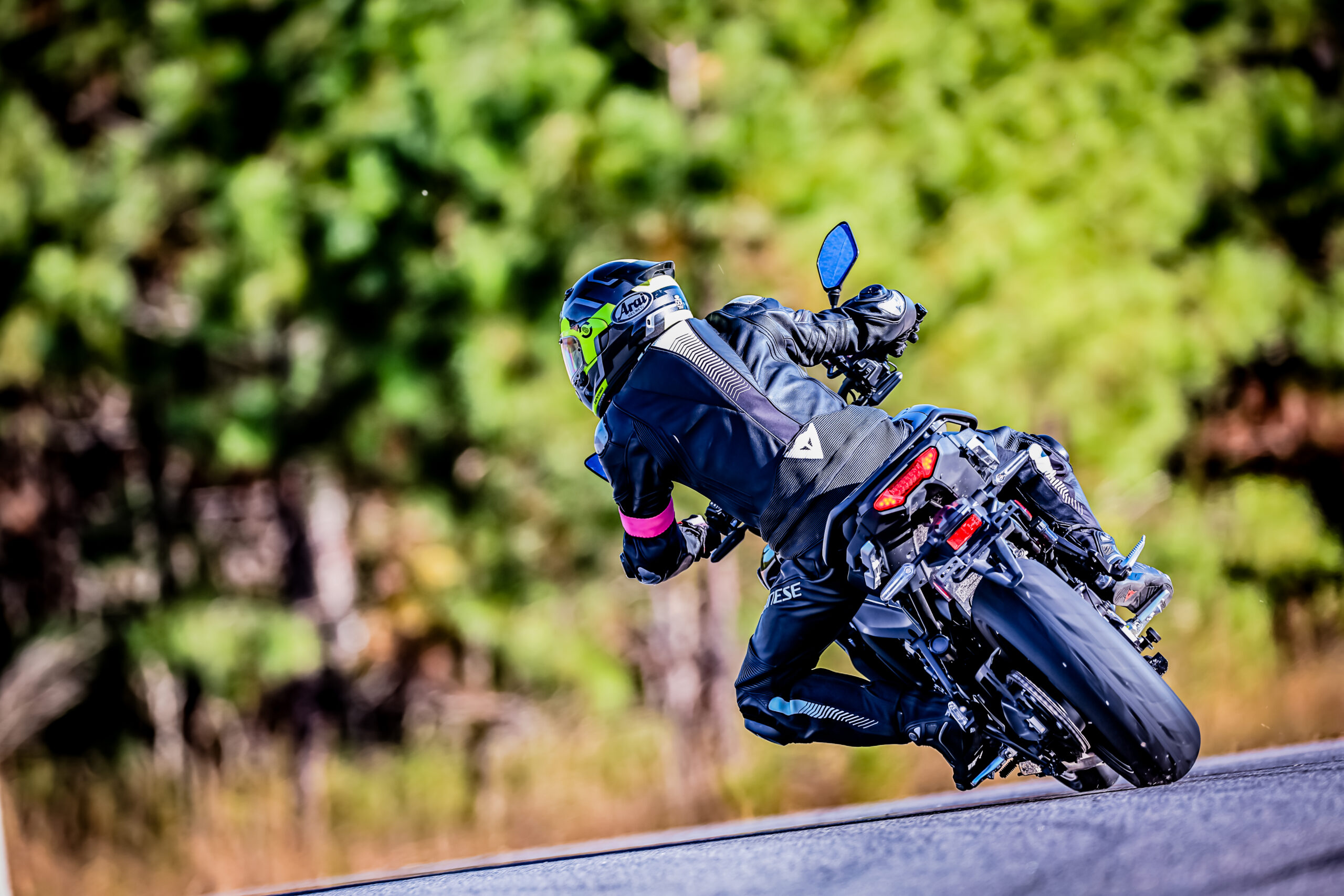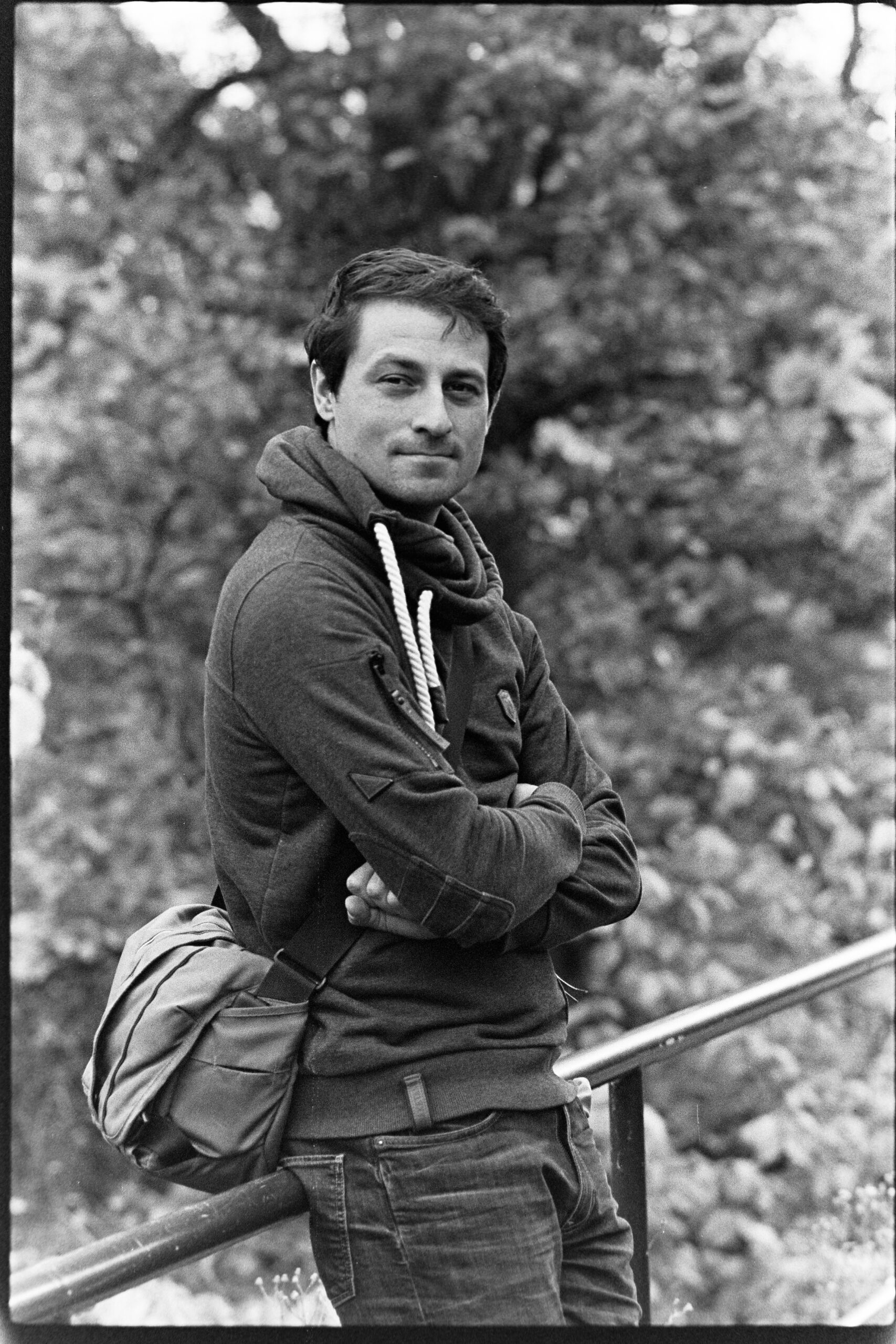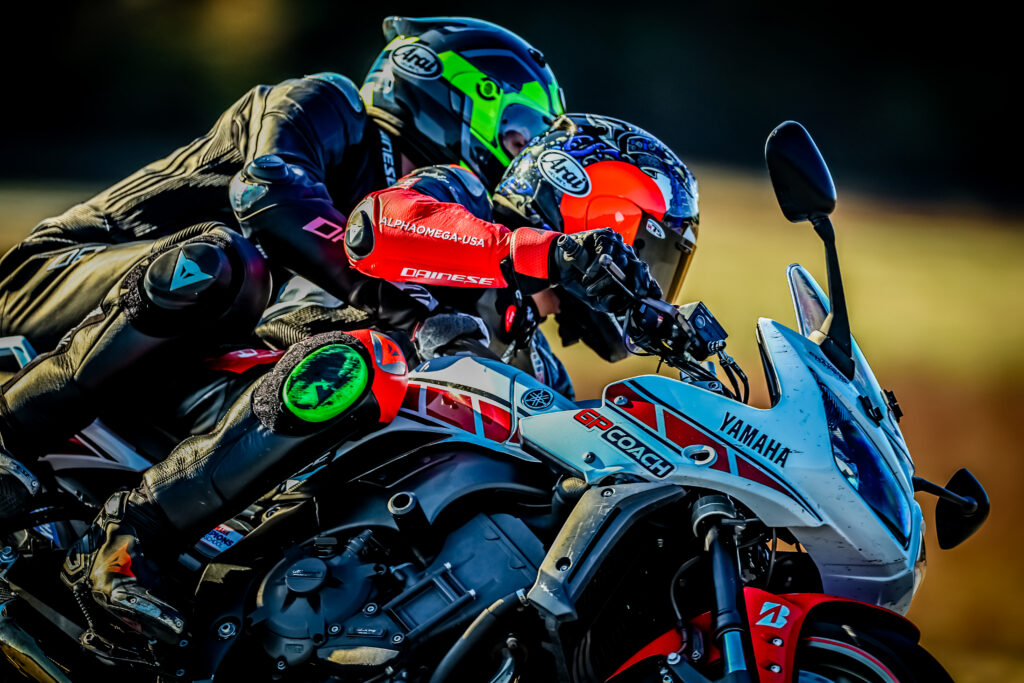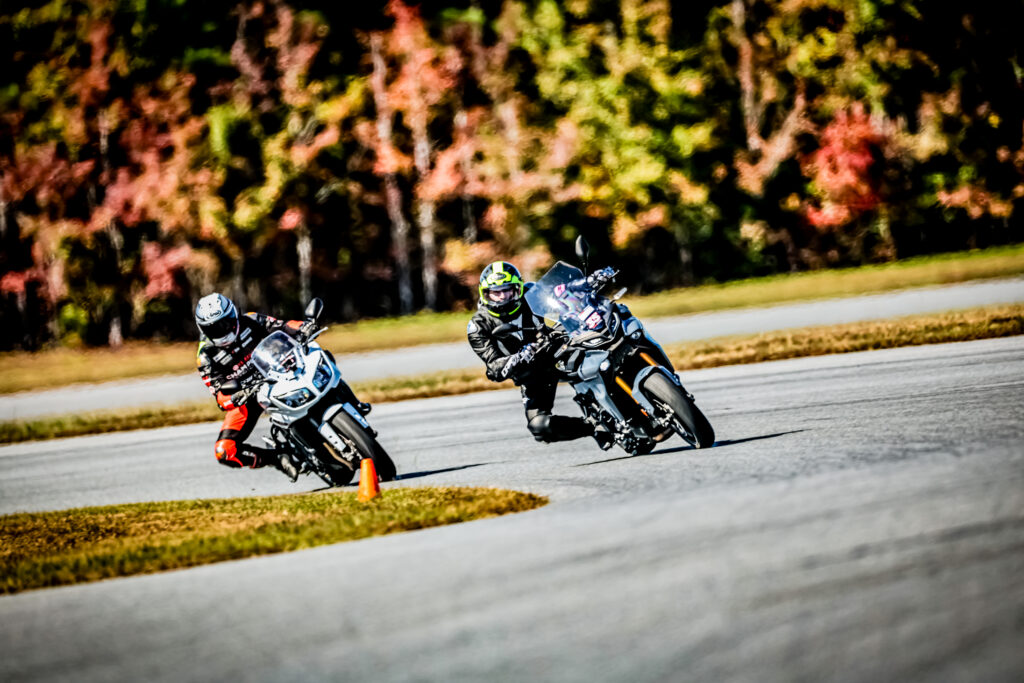Learning to brake in the USA – trail braking for safer riding

From everyday incidents to insight
I’ve been riding motorcycles since I was sixteen. Over the years, I’ve switched between different models and, like many others, collected both mistakes and lessons. Two moments in particular have stayed with me.
The first was a classic beginner’s fall in an everyday traffic situation. I was approaching a junction on a rain-soaked street when the traffic light changed from green to amber. In a moment of hesitation, I realised I might not make it through in time and instinctively grabbed the brake. Without ABS and without loading the front tyre properly, I lost grip, locked the front wheel and gently slid over. It was a simple but crucial reminder of how important it is to understand when and how a tyre gains grip.
The second was a success. I was riding with a passenger through the winding roads of southern Bohemia in the Czech Republic. In a tightening downhill bend, I braked gradually and smoothly. We came through without drama – though both of us were palpably relieved, with our hearts racing afterwards.
Those moments taught me the value of being smooth and progressive on the brakes – not just grabbing them, but giving the tyres a chance to grip. Back then, though, it wasn’t yet a conscious technique; I was still riding mostly by feel and experience.
Jakten på bättre teknik
The pursuit of better technique
I used to live in the Czech Republic, where I studied at university and worked for a few years before my then wife and I moved to Sweden and began learning Swedish. Today I work as a doctor in interventional radiology in Linköping, and my current partner is a baker.
I started riding at sixteen and continued until I was twenty-one, when I sold my Honda Transalp to go travelling. Ten years later, at thirty-two, I bought another bike – a KTM 1190 Adventure R – and since then my passion has only grown. I even managed to pass it on to my partner. After moving to Sweden, I picked up riding again and eventually switched to a KTM 890 Adventure. I wanted to become more confident on gravel, so I took courses with Touratech and Sweet Lamb in Wales, as well as training with legendary off-road rider Chris Birch.
Later, we bought a Ducati Scrambler 800 for my partner when she started riding, which made me refocus on road and track riding.
That’s when I began looking deeper into road-riding techniques and came across the Yamaha Champions Riding School – ChampSchool – and their online course. Their approach was different, based on a simple principle: the laws of physics apply whether you’re on the track or the road. The technique is fundamentally the same – only the intensity and pace differ.
As I began to grasp their philosophy, I realised I wanted to apply it in practice. I borrowed my partner’s bike and took part in Swedish Motorcyclists Association (SMC) training sessions and safety courses. At the same time, I helped her prepare for her licence test – a process that made me want to deepen my own understanding even further.
The philosophy behind ChampSchool
ChampSchool was founded by motorcycle journalist Nick Ienatsch, author of Sport Riding Techniques. The school has around twenty instructors, all with racing backgrounds, and Yamaha as its main sponsor.
Their philosophy is about giving the rider maximum control by understanding tyre grip and load – and riding the motorcycle the way it was designed to be ridden. Trail braking – maintaining brake pressure as you enter the corner – is one of the cornerstones. It’s not about riding the fastest, but the safest.
When my brother moved to the United States, I made up my mind. I wanted to attend the course in person and see if the theory truly held up in practice.
Two intense days in North Carolina
The school offers both motorcycles and gear for hire. I rented a Yamaha Tracer 9 GT – a bike similar in style to my own adventure machine – and borrowed all the protective gear except gloves.
On the first morning, we were greeted by a neatly organised line of Yamahas. We were split into two large groups – half started on the track, the other half in the classroom. Within those, we were divided into smaller groups of four, each with a dedicated instructor.
We practised loading the tyres correctly – first by gently applying brake or throttle to create initial grip, then gradually increasing the load. We learnt that tyres can handle significant stress, but not sudden changes. We also explored how braking affects corner radius and how to steer a bike using throttle and brake input, not just the handlebars.
One memorable exercise was the “lying cones” drill. Instructors placed cones on their sides, and our task was to ride close to the pointed end – forcing us to read each corner dynamically. The cones were moved between laps, just like real-world road conditions constantly change.
We spent plenty of time riding directly behind the instructors, receiving live feedback, but also took turns leading so they could analyse our technique from another angle. I even rode pillion with one of them – an eye-opening demonstration of how smooth and controlled high-level riding can be.
We were filmed twice and reviewed the footage together – incredibly valuable for seeing oneself objectively and receiving concrete feedback.
Techniques that work on both road and track
ChampSchool teaches that trail braking and tyre loading aren’t track-specific skills – they’re fundamental riding techniques that enhance safety in everyday road riding.
My partner has learnt these techniques from the start, and they’ve given her a sense of confidence and control I wish more riders could experience.
A course that transformed my riding
I don’t regret going to the US for a second. In fact, I’m already thinking about returning. My curiosity hasn’t stopped at practical training – I’ve also begun exploring the physics of motorcycle dynamics. Being a bit of a tech nerd, I’ve taken on Motorcycle Dynamics by Vittore Cossalter, which I highly recommend to anyone wanting to understand motorcycle behaviour in depth.
I haven’t found another course in Europe with the same clarity and individual attention. For anyone looking to grow as a rider – not just to get faster, but to become safer and more confident – it’s an investment worth every penny.
Curious about ChampSchool? Visit champschool.com






